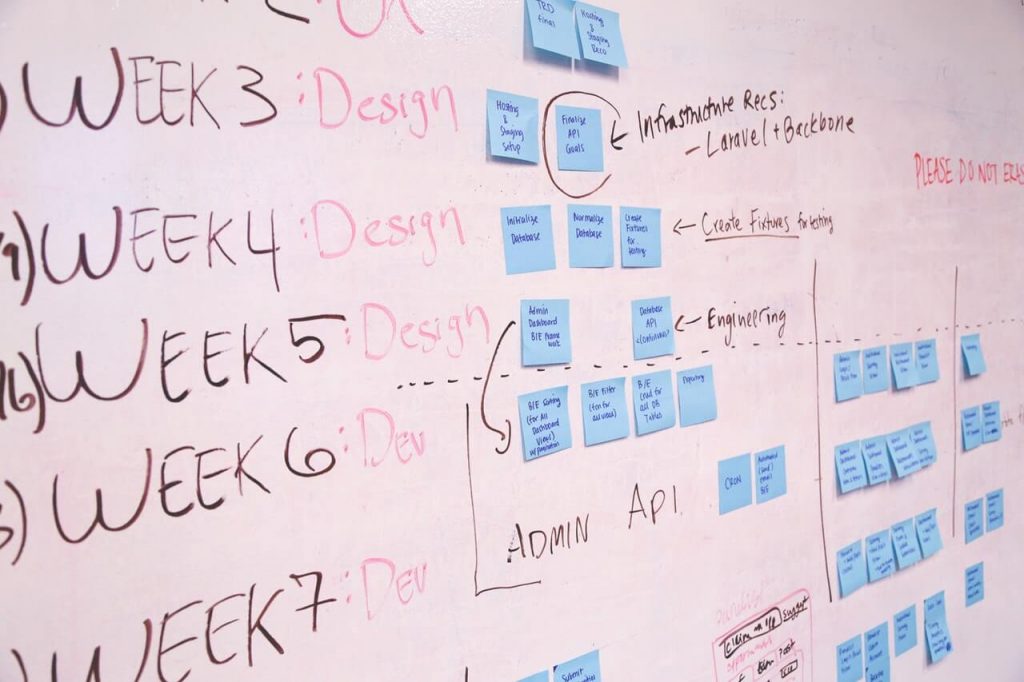This post highlights “Deep Work” methods for staying focused in work for difficult tasks. I apologise for the slight delays in publishing due to distractions like the phone ringing, signing for deliveries and various client emails that needed dealing with urgently (see what I did there?).
Most jobs have a mix of different types of tasks. Some are difficult and require your full attention, some are routine as a result of your expertise and some are simply tedious but still important to complete properly.
Examples of Deep Work tasks
There are times when you really need to knuckle down and give the task in hand your full attention. In our world of web design, IT and coding this could be one of the following:
- Debugging and fixing problems in coding;
- Troubleshooting a website problem;
- Checking customer data exported from a website;
- Designing a website;
- Adjusting DNS setting for a domain name change;
- Proofreading website content;
- Meeting clients to discuss new web design or web hosting projects
- Putting together new website project proposals.
These type of task require full attention to detail otherwise you make mistakes or the tasks take longer than they should which leads to inefficiencies.
There are other tasks which may need less intense focus such as backing up data or testing code or a new website however even these have crucial points where the task can fail.
In the wider world of general business examples a “Deep work” tasks include the following:
- Checking and approving accounts;
- Proofreading before sending artwork to print;
- Approving wages;
- Transferring money or paying invoices;
- Writing proposals for new business.
Recognising and moving to “Deep Work” mode is important to improve productivity.
Here are the best 5 methods:
#1 Categorise tasks as Deep or Shallow
Before you’re ready to dive into the deep work end, you need to know which tasks require the most focus. Here’s a handy rule of thumb:
How long would it take (in months) to train a smart recent college graduate with no specialized training in my field to complete this task?
Cal Newport, ‘Deep Work’
The shorter the time period, then the shallower the task and the lower the rewards. This measure helps you determine which tasks are going to be most rewarding in the long run – focus on those.
 #2 Stop multitasking and organize your day
#2 Stop multitasking and organize your day
Working on a single task at a time means you will be able to give it more focused attention. Multi-tasking is often over-rated as a productivity tool as too much switching attention and realigning goals for each task wastes your cognitive energy and can lead to mistakes.
That said, using time productively while your PC is scanning or copying data can include simple emails, reading something business related etc.
Newport has four different philosophies:
| The philosophy | What is it? | Minimum unit of time | Is it for you? |
| Monastic | Eliminate all shallow efforts and focus on one task that brings tremendous value. | Until the task is complete. | Are you able to remove yourself from your environment for an extended period of time? |
| Bimodal | Divide your time between shallow and deep tasks. Find deep and uninterrupted periods of concentration. | One day. | Do you need shallow tasks to be successful? |
| Rhythmic | Deep work is a habit and part of your everyday routine. | 60 to 90-minute blocks. | Do you have deep and shallow tasks that require regular attention? |
| Journalistic | Embarking on deep work when time is available without much notice. | As little as 30 minutes can be enough. | People who have strong will power and can switch focus on and off. |
The rhythmic philosophy is a common option where your day is a mix of “Shallow tasks” (filing, answering emails and other “email stuff” which can’t be ignored) and Deep Work.
#3 Stop waiting for inspiration to strike
It’s easy to wait for motivation or some boost of energy; however this cannot happen in business.
Amateurs sit and wait for inspiration, the rest of us just get up and go to work.
Stephen King
And this:
“Inspiration exists, but it has to find you working.”
Pablo Picasso
Make it easy for yourself to get down to work by coupling a good workspace with rules and routines.
Here are some tips:
- Turn up – Woody Allen once said that “80 percent of success in life is just showing up”.
- Have a location for focused work.
- Set achievable time limits for focused work to keep your mind sharp and motivation high.

- Set rules to help you stay focused.
- Give your brain some support. Bring coffee, tea, water, and healthy snacks to your location.
- Have everything you need nearby so you don’t need to move from your spot once you settle in.
#4 Use a meaningful measure
While you can find millions of measures for productivity, deep work is best used in conjunction with lead and lag measures. A lag measure is a great way to measure outcomes. For example, your bounce rate is a good way to measure how long people stay on site. But, it doesn’t really help you keep people on site.
For an improved bounce rate, you need lead measures in place. The lead measures are directly related to the lag measure and help predict the outcome.
#5 Throw out your to-do-list – schedule
Rather than have to-do-lists which can demoralize, try organising your time tasks around the hours you have available.
This means entering tasks into your diary and scheduling a time and date to complete them. Use a calendar, or daily planner, to set up blocks of time devoted to either deep or shallow tasks. The blocks should be no longer than 90 minutes for any deep tasks.
Conclusions
Deep work offers a great chance to improve your workplace focus, improving productivity and having more success.
Take these tips and start building your day around periods of focus. You will find that your focus muscle gets more powerful as you use it more.
Further reading
See this article for a detailed description and tips on Deep Work – How to stay focused at work




